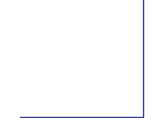 |
|
 |
|
White CoatWhite coat is used on the higher end jobs. It is applied over gypsum plaster as a finish. This is one of the most artistic applications in the building trade. When it is done properly, a wall can be finished so smooth that you can see a reflection in the wall. This is how it is done – assuming that we have a gypsum wall, ready for finish. – The materials needed are: slacked or hydrated lime, gauging, and water. – The basic tools needed are: a mortar board and stand, hawk, trowels, angle block, and a finish brush. Some plasterers like to use a felt or blister brush. We have one, but never use it. We prefer to use the black horse hair type brush. – Lime Putty: Slacked Lime is lime that has been saturated with water. After it has been properly mixed, it has the appearance and consistency of cake frosting. We call this lime putty. – Prepare the mortar board by setting it up on the stand. Soak the board with water and clean it. Pile the lime putty on the board. We use approximately 5 gallons of putty at a time. – Prepare the putty for gauging, by forming it into a mound in the center of the board. Once it is formed into a mound, insert the trowel into the center of the mound and work a hole into the center, turning the trowel in circles until the mound of putty looks like a donut. It is important that, in the center of the donut, there is a thin layer of putty, so that no wood is exposed. Set your trowel into the center of the donut, pour clean water onto the trowel being careful not to disturb the thin layer of lime. Add water until the donut is about two thirds full. – Add gauging to the water by working it through your fingers in an effort to keep the gauging lump free. Sprinkle it over the water until it completely covers the water and takes on a caked mud look as it soaks the water up. It is important to let the gauging sit in the water, undisturbed, until you are ready to use it. We usually prepare the mud to this point and then prepare the wall that we're going to finish. Get lights ready make sure there aren't any imperfections etc. It is interesting to note that the gauging, when it gets wet, turns pink and becomes slightly darker or lighter, depending on the source of the gauging. – When everything is ready to go, mix the lime and gauging together by starting at the point where the lime and gauging meet, working the lime into the center, mixing by hand until it is thoroughly mixed and consistent. The finish is applied in three coats. We call the first coat a scratch coat. The purpose of the scratch coat is to cover the wall, and fill in any imperfections. After the scratch coat, you double it up, watching for any imperfections and making the finish as consistent as possible. After doubling it up, go over the whole wall with a thin layer of mud, We use about one hawk of mud per 100 square feet. We are more concerned at this point to be sure that the wall is free of any valleys or holes. Once the mud on the wall is durable, We go back over the wall and dry trowel it. This is done by simply going over the wall and wiping it down with a trowel, looking for any imperfections, throughout the process. In most cases, each coat is applied using a stroke that goes in a different direction than the previous stroke. When the putty starts to set, the wall is water troweled. This is done by applying water to the wall and rubbing it down with the trowel. We do this by stroking the wall with the brush directly in front of the trowel. The finished product is a wall that is free of imperfections and so smooth that you can see the reflection of the adjacent walls in it. |
| Top of Page | Contact Us | Site Map | Copyright © 2000-2009 Plaster, Inc. All Rights Reserved. Web Design by Mark Peterson Web Design |
|
